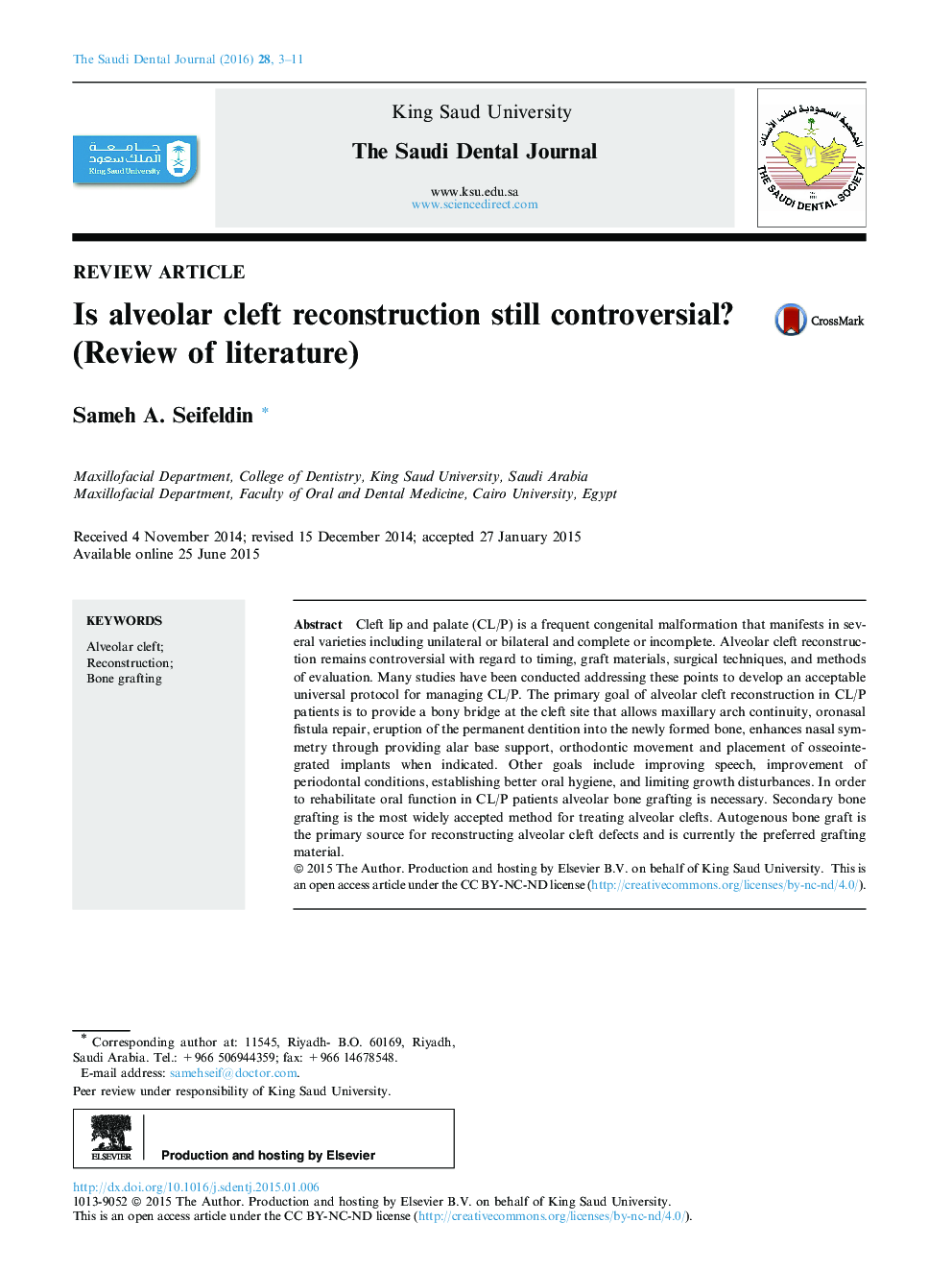| Article ID | Journal | Published Year | Pages | File Type |
|---|---|---|---|---|
| 2683223 | The Saudi Dental Journal | 2016 | 9 Pages |
Cleft lip and palate (CL/P) is a frequent congenital malformation that manifests in several varieties including unilateral or bilateral and complete or incomplete. Alveolar cleft reconstruction remains controversial with regard to timing, graft materials, surgical techniques, and methods of evaluation. Many studies have been conducted addressing these points to develop an acceptable universal protocol for managing CL/P. The primary goal of alveolar cleft reconstruction in CL/P patients is to provide a bony bridge at the cleft site that allows maxillary arch continuity, oronasal fistula repair, eruption of the permanent dentition into the newly formed bone, enhances nasal symmetry through providing alar base support, orthodontic movement and placement of osseointegrated implants when indicated. Other goals include improving speech, improvement of periodontal conditions, establishing better oral hygiene, and limiting growth disturbances. In order to rehabilitate oral function in CL/P patients alveolar bone grafting is necessary. Secondary bone grafting is the most widely accepted method for treating alveolar clefts. Autogenous bone graft is the primary source for reconstructing alveolar cleft defects and is currently the preferred grafting material.
